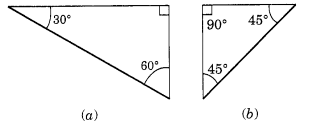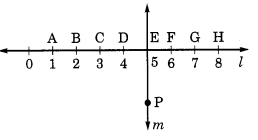NCERT Solutions Class 6 Maths
Chapter – 5 (Understanding Elementary Shapes)
The NCERT Solutions in English Language for Class 6 Mathematics Chapter – 5 Understanding Elementary Shapes Exercise 5.5 has been provided here to help the students in solving the questions from this exercise.
Chapter 5: Understanding Elementary Shapes
- NCERT Solution Class 6 Maths Exercise – 5.1
- NCERT Solution Class 6 Maths Exercise – 5.2
- NCERT Solution Class 6 Maths Exercise – 5.3
- NCERT Solution Class 6 Maths Exercise – 5.4
- NCERT Solution Class 6 Maths Exercise – 5.6
- NCERT Solution Class 6 Maths Exercise – 5.7
- NCERT Solution Class 6 Maths Exercise – 5.8
- NCERT Solution Class 6 Maths Exercise – 5.9
Exercise – 5.5
1. Which of the following are models for perpendicular lines:
(a) The adjacent edges of a table top.
(b) The lines of a railway track.
(c) The line segments forming the letter ‘L’.
(d) The letter V.
Solutions:
(a) The adjacent edges of a table top are perpendicular to each other.
(b) The lines of a railway track are parallel to each other.
(c) The line segments forming the letter ‘L’ are perpendicular to each other
(d) The sides of letter V are inclined forming an acute angle.
Therefore (a) and (c) are models for perpendicular lines.
2. Let be the perpendicular to the line segment
. Let
and
intersect in the point A. What is the measure of ∠PAY?
Solutions:
 From the figure it is clear that the measure of ∠PAY is 900
From the figure it is clear that the measure of ∠PAY is 900
3. There are two set squares in your box. What are the measures of the angles that are formed at their corners? Do they have any angle measure that is common?
Solutions:
The figures of the two set-squares are given below:

The measure angles of triangle (a) are : 30°, 60° and 90°.
The measure angles of triangle (b) are 45°, 45° and 90°.
Yes, they have a common angle of measure 90°.
4. Study the diagram. The line l is perpendicular to line m
 (a) Is CE = EG?
(a) Is CE = EG?
(b) Does PE bisect CG?
(c) Identify any two line segments for which PE is the perpendicular bisector.
(d) Are these true?
(i) AC > FG
(ii) CD = GH
(iii) BC < EH.
Solutions:
(a) Yes, since, CE = 2 units and EG = 2 units respectively.
(b) Yes. Since, CE = EG as both are of 2 units. Hence PE bisect CG.
(c) and
are the line segments for which PE is the perpendicular bisector.
(d)
(i) True.
Since AC = 2 units and FG = 1 unit
∴ AC > FG
(ii) True because both are of 1 unit
(iii) True.
Since, BC = 1 unit and EH = 3 units
∴ BC < EH

Leave a Reply